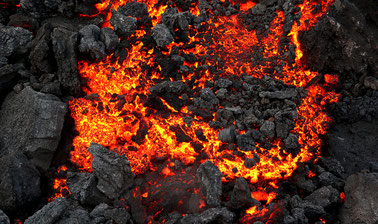The online earthquake simulations on this page will help you understand how seismic waves are generated and act and how a seismograph works.
What are earthquakes
Earthquakes are natural phenomena that occur when there is a sudden release of energy in the earth’s crust. This release of energy can have devastating consequences, as it causes vibrations and movements on the Earth’s surface. Earthquakes occur mainly in areas of seismic activity, such as tectonic faults, where continental plates meet and move.
The seismograph and the Richter scale
A device called a seismograph is used to measure the intensity of earthquakes. The most common measure used to quantify the magnitude of an earthquake is the Richter scale, which quantifies the energy released during the event. Smaller earthquakes, generally below 4 on the Richter scale, are imperceptible to people, while earthquakes of magnitude greater than 7 can cause significant damage. The modified Mercalli scale is also used to assess the intensity of an earthquake based on the effects observed at different locations.
Effects of earthquakes
The effects of an earthquake can be catastrophic. Sudden ground shaking can cause buildings to collapse, roads to crack, and bridges to collapse. In addition, earthquakes can generate tsunamis in coastal areas.
Earthquakes can also have secondary consequences. Landslides, fires, and seismic aftershocks are common after an earthquake. These events can hamper rescue efforts and increase the number of casualties and overall destruction.
To mitigate the effects of earthquakes, construction techniques have been developed to make buildings more resistant to seismic shaking. Building codes and seismic standards are implemented in many earthquake-prone regions to ensure that structures are designed to withstand seismic stress.
Seismic monitoring
Seismic monitoring is an important tool for detecting and studying earthquakes. Networks of seismographs and other devices are used to measure and record ground motions. These data are used to better understand seismic activity, predict the occurrence of earthquakes, and alert at-risk populations.
In short, the online earthquake simulations will show you in an interactive and simple way how an earthquake acts. Don’t miss them!
Explore the exciting STEM world with our free, online simulations and accompanying companion courses! With them you'll be able to experience and learn hands-on. Take this opportunity to immerse yourself in virtual experiences while advancing your education - awaken your scientific curiosity and discover all that the STEM world has to offer!
Earthquake simulations
- Waves
- Seismograph
Seismic waves
Observe in this animation the differences between S-waves and P-waves.
Seismograph
Observe how a seismograph works. Modify the magnitude of the earthquake according to the Ritcher scale and see what happens.
Giants of science
“If I have seen further, it is by standing on the shoulders of giants”
Isaac Newton

Charles Lyell
–

Alfred Lothar Wegener
–
Become a giant


Unconventional Reservoir Geomechanics



Reservoir Geomechanics



Monitoring Volcanoes and Magma Movements



Geoscience: the Earth and its Resources



Sensing Planet Earth – Water and Ice



Introduction to Deep Earth Science



The History of Ancient Environments, Climate, and Life



Sensing Planet Earth – From Core to Outer Space




























